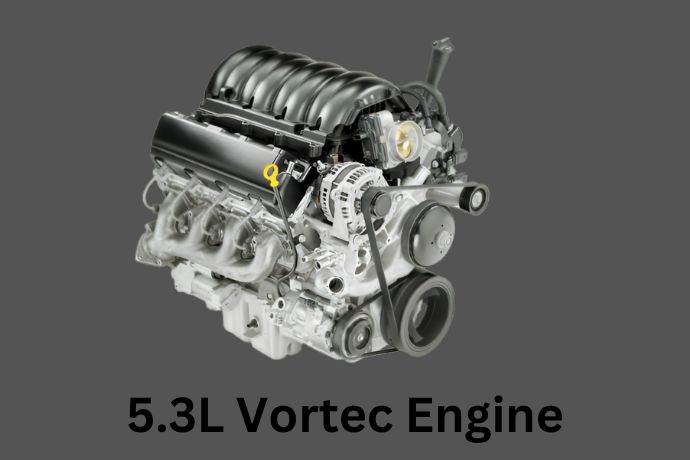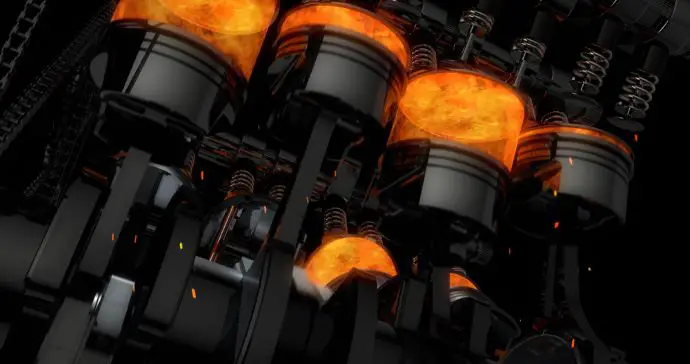General Motors manufactures GM 5.3 and 6.0 engines to fulfill different demands.
Both engines are reliable and high performing, but they have some unique characteristics.
The 5.3L engine is good for regular use, while the 6.0L is ready for heavy tasks.
However, many people wonder which engine is better, 5.3L V8 or 6.0L V8?
This article is about the differences between the GM 5.3 and 6.0 engines.
One of the most important things to consider when choosing an engine is its performance.
5.3 has a few key differences from 6.0.
Some differences may be minor, but others could significantly impact your truck’s performance.
5.3 Vs 6.0 [12 Differences & Similarities You Must Know Before Choosing One]
Although both engines are reliable and performance-oriented, they have 12 key differences.
The following table provides a quick comparison of the GM 5.3 Vs 6.0 V8 engines:
| GM 5.3L V8 Engine | Features | GM 6.0L V8 Engine |
| 580 LBS or 263 kg | Weight | 500 lbs or 227 kg |
| 320 hp or 238 kW | Horsepower | 321 hp or 239 kW |
| 335 lb.-ft | Torque | 382 lb.-ft |
| 11,500 pounds | Towing Capacity | 14,800 pounds |
| 3,500 pounds | Payload Capacity | 7,150 pounds |
| 6-speed automatic transmission | Transmission System | 6-speed automatic transmission |
| 6.4 sec | 0-60 mph | 7.2 sec |
| 6,000 RPM | Max Engine Speed | 5,600 RPM |
| 17 mpg/city and 22 mpg/highway | Fuel Economy | 14 mpg/city and 17 mpg/highway |
| $3,500 to $4,200 | Price | $4,000 to $8,000 |
| 3-years or 36,000 miles basic warranty | Warranties | 3-years or 36,000 miles basic warranty |
01. Vehicle Application
GM uses the 5.3 engine in the following vehicles:
- Chevrolet Silverado 1500 (5.3L Eco Tec3 V8)
- Chevrolet Express
- GMC Savana
GM uses the 6.0 engine in the following vehicles:
- Chevrolet Silverado 2500 HD, 3500 HD
- Chevrolet Suburban 2500, 3500 HD
- Chevrolet Express 2500, 3500
- GMC Sierra 2500 HD, 3500 HD
- GMC Savana 2500, 3500
- GMC Yukon XL 2500
02. 5.3 Vs 6.0 Weight
The 5.3L engine weight is 580 LBS or 263 kg with a fully dressed iron block.
With aluminum cylinder heads, the weight decreased, and it is 500 lbs or 227 kilograms.
The 6.0 Vortec engine weight is around 580 lbs or 263 kilograms with a fully dressed iron block.
03. 5.3 Vs 6.0 Block Differences
 One of the famous 5.3 Vortec engines is the LMF engine.
One of the famous 5.3 Vortec engines is the LMF engine.
LMF engine block is made of cast iron.
Here is a brief information about this 5.3 engine.
- Material: iron Stroke 3.633 in.
- Bore spacing: 4.400 in.
- Bore dia: 3.78 in.
- Displacement: 5.3L/ 325 c.i.d
- Deck height: 9.240 in.
- Main housing Bore Dia: 2.751 in.
- Main cap style: 6-Bolt.
6.0 Vortec engine blocks are made of iron and aluminum heads.
Here is brief information about this 6.0 engine.
- Material: iron
- Bore: 4.00 in.
- Stroke: 3.62 in.
- Displacement: 6L/ 364 c.i.d.
- Deck height: 9.235 in.
- Main housing Bore Dia: 2.75 in.
- Main cap style: 6-Bolt.
04. 5.3 Vs 6.0 Cylinder Heads
Let’s compare the cylinder heads of 5.3L and 6.0L Vortec engine.
5.3L Vortec Engine-
- Material- Aluminum
- Combustion Chamber Volume- 65cc
- Intake port shape- Cathedral
- Exhaust runner shape- D port
- Intake runner volume- 210cc
- Exhaust runner volume- 75cc
6.0L Vortec Engine-
- Material- Aluminum
- Combustion Chamber Volume- 70cc
- Intake Port Shape- Rectangle
- Exhaust Runner Shape- D-port
- Intake Runner Volume- 257cc
- Exhaust Runner Volume- 87cc
Both cylinder heads are made of Aluminum alloy, and their exhaust port shape is D-port.
05. 5.3 Vs 6.0 HP
 5.3 engine provides around 320 hp (238 kW) @ 5200 RPM certified by SAE.
5.3 engine provides around 320 hp (238 kW) @ 5200 RPM certified by SAE.
And produces 335 lb.-ft (454 Nm) @ 4500 RPM, certified by SAE.
The 6.0 engine will produce up to 321 hp (239 kW) to 360 hp (268 kW) @ 4400 to 5400 RPM certified by SAE.
And produces 373 lb.-ft (506 Nm) to 382 lb.-ft (518 Nm) @ 4400 RPM certified by SAE.
06. Towing Capacity
5.3 Eco Tec3 v8 max towing capacity is 11,500 pounds or 5,216 kilograms, and max payload capacity is 2,420 pounds or 1100 kilograms.
The latest Vortec 6.0L V8 max towing capacity is around 14,800 pounds or 6,713 kilograms.
The max payload capacity is 3,500 pounds (1587 kg) for Chevy Silverado 2500 HD, and for the Chevy Silverado 3500HD payload capacity is 7,150 pounds (3243 kg).
6.0 engine towing and payload capacity is better than the 5.3 engine.
07. Transmission System
Two types of management and transmission systems are available in the 5.3L V8 engines.
- Automatic Fuel Management system (AFM)
- Dynamic Fuel Management system (DFM)
The AFM system of the 5.3 engine comes with 6-speed automatic transmission, and the DFM system of the 5.3 engine comes with 8-speed automatic transmission.
If we consider fuel economy, 8-speed transmission is better than a 6-speed.
Because 8-speed provides up to 11% better fuel mileage than 6-speed transmission.
However, the new 2022 Chevrolet Silverado 1500 comes with a 5.3L 10-speed automatic transmission, which is available in High Country.
Chevy 6.0L Vortec has a 6L90 6-speed automatic transmission.
08. 0-60 MPH
5.3L engine reaches 0-60 mph in 6.4 sec.
6.0L engine reaches 0-60 mph in 7.2 sec.
You might have thought the 6.0L engine would reach 0-60 mph in lesser than 5.3.
But you are wrong cause it takes a bit more time to reach 0-60.
09. Max Speed
5.3L Gen IV V8 maximum engine speed is 6000 RPM.
GM 6.0L V8 Vortec L96 maximum engine speed is 5600 to 6000 RPM.
Both engines provide almost the same speed.
10. 5.3 Vs 6.0 MPG
5.3L Vortec engine provides 17 mpg in the city and 22 mpg on the highway.
6.0L Vortec engine provides 14 mpg in the city and 17 mpg on the highway.
Comparing fuel economy 5.3L engine is much better than 6.0L engine variants.
11. Price
This engine’s price range of 5.3 Vortec is currently around $3,500 to $4,200.
A complete set of 6.0 Vortec engines will cost you around $4,000 to $8,000.
Vortec 5.3 engine is cheaper than Vortec 6.0L.
12. Warranty Period
5.3 Vortec engine comes with three years warranty or 36,000 miles warranty.
6.0L engine also comes with a 3-years or 36,000 miles warranty.
However, the warranty period will vary depending on the parts and problems.
Like rust-through protection, the warranty lasts six years or 100,000 miles.
5.3 Vs 6.0 Reliability
A 5.3 engine will provide 320 hp at 5200 RPM, whereas a 6.0 will provide up to 350 hp at 5400 RPM.
A 5.3 engine achieves 335 lb.-ft at 4500 RPM, whereas a 6.0 will provide around 380 lb.-ft at 4400 RPM.
5.3 engine will last over 350,000 miles.
6.0 engine lifespan is the same as 5.3, approximately 300,000 miles.
Both engines will provide excellent and long-lasting performance.
In short, I can say both engines are reliable in their category, and both engines will make you happy.
FAQs
Are 5.3 and 6.0 blocks the same?
According to the data, the two engines use the same cast iron block.
The dimensions of both engines are almost the same.
5.3 Vs 6.0 Which is better?
It depends on the person’s choice.
If you want better fuel economy, then 5.3 is better for them.
If one wants better power and towing capacity, they go for a 6.0 engine.
Some people give superiority to 6.0L engines because they use their trucks for heavy duty.
Fuel economy doesn’t provide any extra advantage in this situation.
6.0 overcomes some common problems that are present in the 5.3 engine.
Is the GM 5.3 a big-block?
No, GM 5.3L is a small block V8 engine.
Although the 5.3 V8 engine produces a lot of power and torque, it is classified as a small block.
This is due to its displacement, block architecture, and lineage.
What is the best year Chevy 6.0 engine?
2010 to 2020 model years are the best Chevy 6.0L Vortec engine.
This model years 6.0L engine gets high reliability ratings.
The engines come with upgraded exhaust port, advanced cylinder head, ETC, and VVT.
With proper maintenance and care, 2010-2020 Chevy 6.0L Vortec engines can last around 220,000 to 250,000 miles without major problems.
Final Thoughts on 5.3 Vs 6.0
If you are looking for a daily driven truck with decent horsepower, torque and towing capacity, then go for the 5.3 engine variants.
On the other hand, if you regularly drive on rough roads and hills or tow heavy machines, go for 6.0 engine variants.

